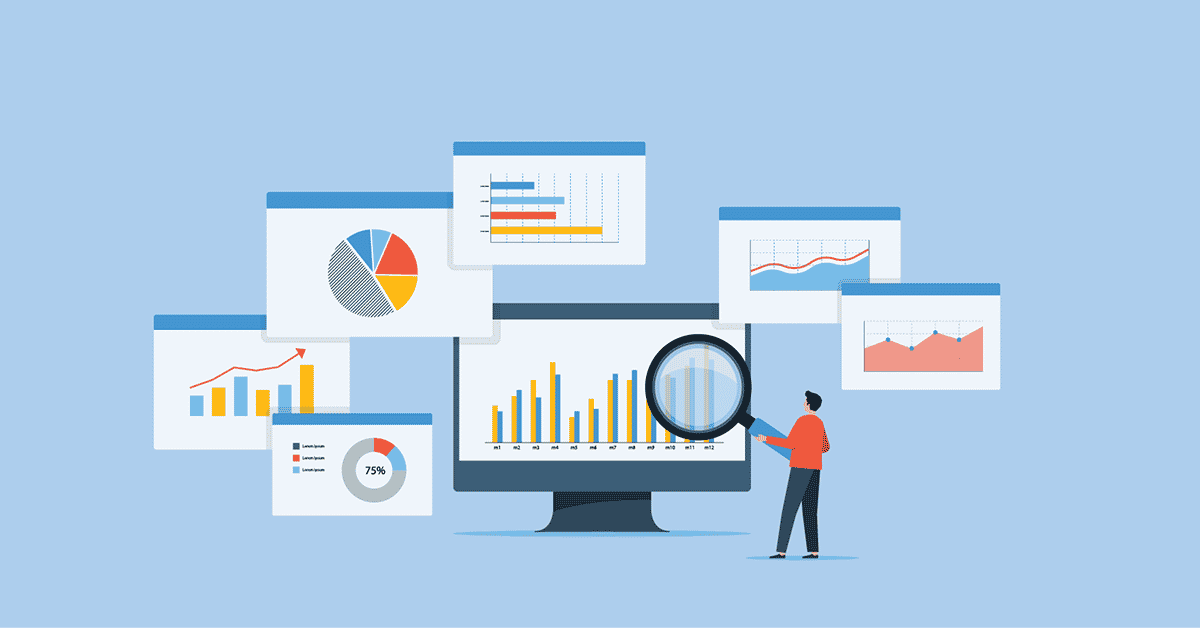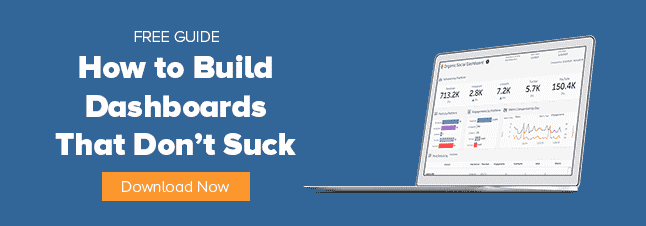
The bottom line on Google Data Studio? Ultimately, it’s designed to solve a very narrow set of problems.
For marketers who work exclusively with Google’s products and need a quick, simple way to produce dashboards, Data Studio is a solid choice. (Especially if you don’t have the budget for a BI or dashboarding tool. GDS is free to use.)
Unfortunately, it’s not going to be a long-term solution that meets the needs of most marketing organizations and agencies.
I say this as someone who really, really wanted Google Data Studio to stand alongside platforms like Tableau or Power BI. Our team even developed a set of marketing dashboards for Data Studio, but we kept running into obstacles with the platform. There are several important capabilities that GDS simply lacks.
Here are the biggest frustrations we had.
Getting data into Google Data Studio is harder than it needs to be.
You can import data into Data Studio, but the size limit is — we feel — relatively small at 100MB.
If you want to work with larger datasets, you have to query those external data sources with a live connection, and that can be frustratingly slow. Change the date range in your dashboard, or make some other minor adjustment? Get ready to wait.
Data Studio has a library of data connectors for bringing data into Data Studio. Google built and maintains the connectors for its products, such as Google Ads and BigQuery, but most of the connectors to Facebook, Twitter and other sources were created by third parties.
There are several data sources without any direct connection to GDS, including Marketo, Moz, ON24 and a lot of other tools that marketers use regularly. You can still move their data into Data Studio, but you might have to put it into Google Sheets, BigQuery or some other solution first.
Or maybe you already use Amazon Redshift for your storage. Data Studio doesn’t have a direct connection to Redshift. To move data from that environment into GDS, we had to use a PostgreSQL connector that didn’t let us easily grab all the data we wanted.
You can blend data with Data Studio, but it’s a really frustrating experience.
When using GDS to blend data from different sources, brace yourself for the experience and responsiveness of the tool to slow to a crawl. Also, Data Studio currently supports only left outer joins. If you’re not careful about how you set things up, your blended datasets could be missing important data.
And you can only blend up to five data sources per chart. That’s not going to be enough if you want to create a high-level view for an entire multi-channel campaign.
You can’t customize your visualizations to the extent that you can with Tableau and Power BI
This is a little picky, I know. Google Data Studio lets you create eye-catching visualizations very easily. It still doesn’t have the flexibility that you’ll find with a platform like Power BI or Tableau — our developers say they can build essentially anything they can imagine with those tools.
There is a lot to like about Google Data Studio. But if you’re serious about marketing analytics and you want to tackle more advanced projects, you want visualization software that makes it easy to handle large volumes of data, from any source. And you want the freedom to visualize it exactly how you choose.
Right now, Data Studio isn’t the tool for that.
Take the Next Step on Your Analytics Journey
Want an expert opinion on the best approach for your team’s marketing analytics? Alight Analytics has helped brands and agencies take their marketing analytics process to the next level. Schedule a free consultation with our team today!

